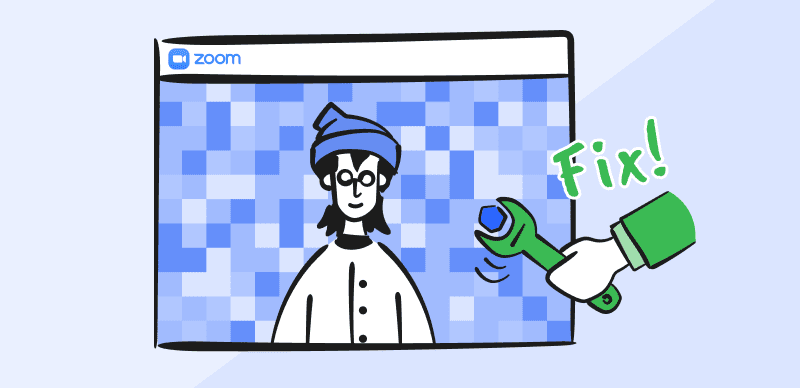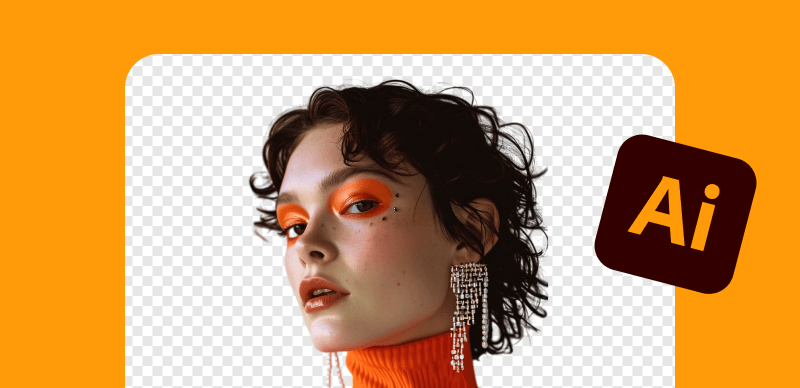
How to Make a Background Transparent in Illustrator
Graphic design is the art of manipulating visual elements and changing existing images to express unique messages and ideas in original ways. It consists of numerous seemingly small operations, such as adding or removing an element, changing the size, color, or position of any object, or merging multiple images into a single picture. Taken together, these actions can produce very creative results and allow the designer to realize almost any visual concept.
One of the basic tasks that every user of Adobe Illustrator should master is making an image background transparent. This can be very important whenever the objects in the foreground need to be isolated and used elsewhere. Illustrator has adequate tools for the removal of any background, but it’s necessary to learn the correct procedure before you can start routinely editing your images in this way.
Further Reading: How to Add Shapes in Premiere Pro >
What is Adobe Illustrator and Why Use It?
This software can be best described as a vector graphics editor that serves as an essential design tool. Illustrator has a long history since its first version appeared as early as 1987. Of course, the tool has evolved over time and acquired many new functions, but it has steadily been a central pillar of Adobe’s creative suite. Originally made for Macintosh computers, Adobe Illustrator is today available for both Windows and MacOS platforms.
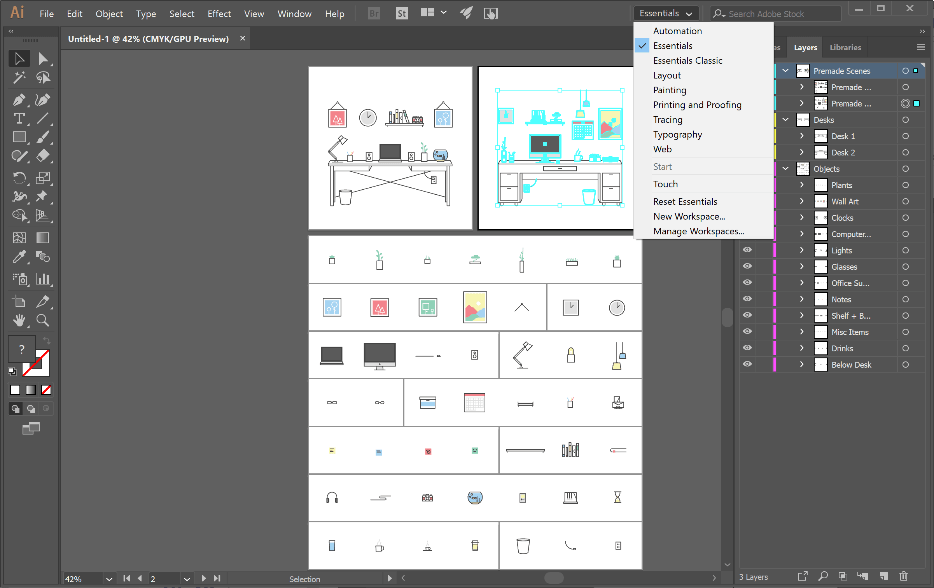
What is Adobe Illustrator
Illustrator is most commonly used for graphic design, particularly when there is a need to construct new visual materials from existing images. It provides very precise control over the image down to the level of individual pixels, while its advanced functions empower the user to transform the visuals in many ways. Elements can be organized on a blank canvas or stacked in layers on top of each other, while their characteristics can be changed to reflect the designer’s idea. Text can also be smoothly blended into the visual and controlled very precisely in terms of both content and appearance.
This creative software is a fantastic choice whenever you need to create any printed or electronic materials for promotional or presentational purposes. Its compatibility with other Adobe tools such as Photoshop, InDesign, or Premiere only increases the value that you can derive from this software. Since this is a professional-level visual tool, investing some time to master its functions may be a better decision than using a less demanding design application.
How to Make an Image Background Transparent?
Adobe Illustrator contains multiple features that can be used to isolate the object from a background. The choice of the most suitable method for completing this task depends on the complexity of the image, the skill level of the designer, as well as the requirements of the project. We will present step-by-step procedures for both methods, so that each user can be prepared for all scenarios.
Using Pen Tool
With this basic visual tool in Adobe Illustrator, you can mark any object so that it can be selected for further operations. It basically allows you to manually draw a line around the objects in the image and then cut them from the background, which is a time-consuming operation but otherwise doesn’t require a whole lot of technical knowledge. All you need to do is select the right tool and then apply it as precisely as you possibly can, like in the steps described here.
Step 1 – Open Illustrator on your computer and upload the image you want to edit
Step 2 – Find the Pen tool in the dashboard on the left side of the screen and select it
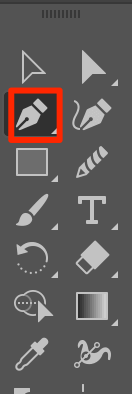
Find the Pen tool option
Step 3 – Zoom in so you can see the image well, and start drawing an outline around the objects by clicking successively on the anchor points on the dividing lines.
Step 4 – Make sure that your outline runs around all the objects in the foreground and touches back on the starting anchor point
Step 5 – Right click anywhere inside the outline you just made, then select the Make Clipping Mask option from the pop up menu
Step 6 – After confirming, you will be able to remove anything left outside of the outline from the image
Using Image Trace
Another native function in Illustrator that you can use for background removal is Image Trace. With this approach, there is less manual work, but it doesn’t produce great results for all images. In cases where the images have already been vectorized or the images are clearly distinguished from the background, it could do a good job. It also requires a better understanding of image processing and object recognition in Adobe Illustrator than the manual method. If you decide to try this automated tracing tool, you should complete the following procedure:
Step 1 – Find the image you need to alter and load it into Illustrator
Step 2 – Enter the Windows menu, then select the Image Trace option from the pop-up window
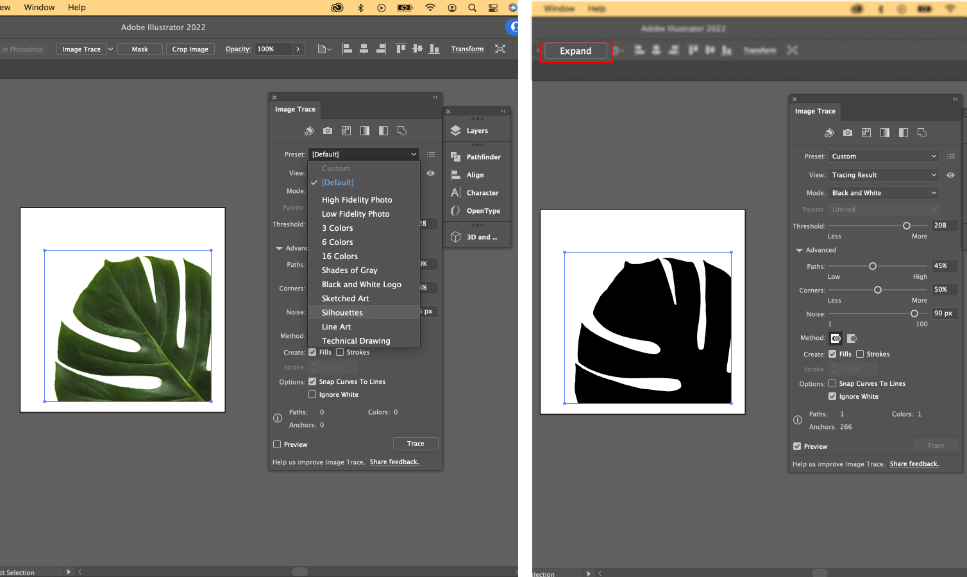
Select the Image Trace Option
Step 3 – Click on Colors and define how many colors are present in the object you want to trace
Step 4 – Use the Expand option to turn the image into a vector, then activate the Object pop up window and click Ungroup
Step 5 – Go to View menu and select the Show Transparency Grid option, which will show you how the image would look with the background removed
Step 6 – Use the Select tool to pick parts of the background you don’t need and delete them one by one
Step 7 – Save the image with a transparent background under a new name
How to Make White Background Transparent?
Images that already have white background that is clearly contrasted by the objects (either by smart photographing or due to a previous edit), transforming that background into a transparent layer is very easy. Basically, you just need to tell Illustrator to show the background it can already recognize as transparent instead of white. Here is how you can do it.
Step 1 – Open the image with a white background in Illustrator
Step 2 – Go to View menu and make the option Show Transparency Grid active
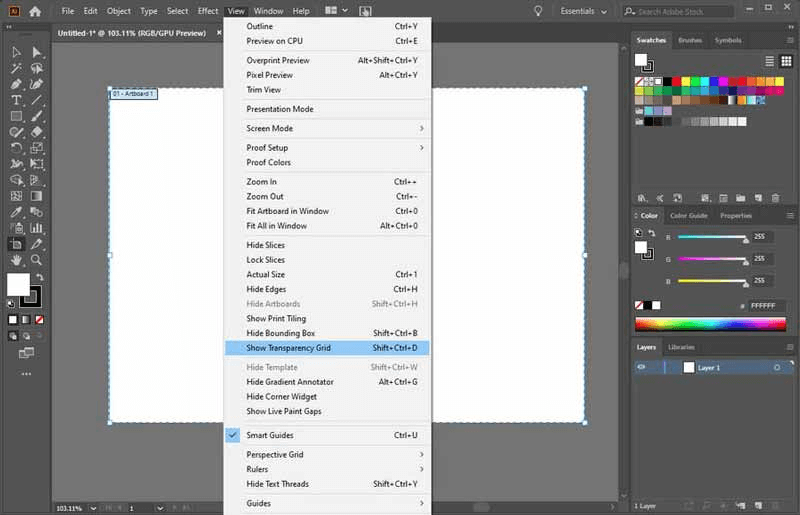
Enable the Show Transparency Grid Option
Step 3 – Alternatively, press Shift + CRTL + D at the same time to activate the same function
How to Save a PDF with Transparent Background in Illustrator?
Since PDF is one of the most convenient file formats for image sharing, learning how to save your image with a transparent background in this format is important. Illustrator allows you to do this with ease, but you need to select the right option from the menu. Just complete these simple steps and your image with no background will be converted to PDF and saved in this format.
Step 1 – After you finish editing the image, enter the File menu and place the mouse cursor over the Export option, then select Export as and define the location in which to store the file
Step 2 – Choose PDF as the export format from the Save as menu
Step 3 – Check the preview to ascertain that the background is transparent
Step 4 – Click on the Export button to convert and save the image
Frequently Asked Questions about Making a Background Transparent in Illustrator
Is it possible to remove multi-colored background from an image?
You can remove any type of background with the aforementioned Illustrator tools, the only question is how much time you will have to spend doing it. Complex, colorful backgrounds with many overlapping objects are more difficult to remove, but with enough attention to detail this can be accomplished.
How can I be more precise when I’m isolating images from the background?
There are a few tips that can help you trace the objects more precisely. Always work on the highest zoom possible so that you can clearly see each pixel, and use a good optical mouse or even better an electronic pen. Having a well-calibrated monitor that faithfully displays colors is also helpful.
Can I export images without background from Illustrator to other visual platforms?
Yes, Illustrator is compatible with almost any major visual software application, especially those from the Adobe package. You can export your images in several formats, including SVG, PNG, and PDF. Just make sure you convert the image into a format that is supported by the target platform.
Final Words
There are many situations when removing the background from an image is necessary, so designers who are learning how to use Illustrator should focus on this task in the early stage. Once you know which tools to use to isolate the objects and separate them from the background, the task becomes far more manageable. It takes some practice to become confident with this procedure and get the desired result every time, so it’s wise to start with simpler images and move to more complex ones over time. Let us know in the comments which method you typically use to remove an image background in Illustrator.


